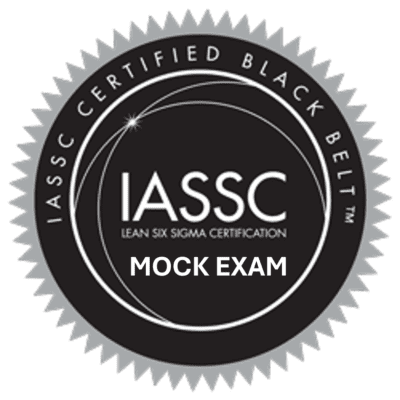Description
Lean Six Sigma Project Charter Online Training Course
Master the Foundation of Successful Six Sigma Projects
Struggling to launch effective process improvement initiatives? The Lean Six Sigma Project Charter is your strategic foundation. This comprehensive 30-minute video training course teaches you to build, complete, and leverage the most critical document in any Six Sigma project. Whether you’re a Yellow Belt, Green Belt, Black Belt, or project manager, mastering the project charter ensures your initiatives stay aligned with organizational priorities, avoid scope creep, and deliver measurable results.
What You’ll Learn
This self-paced online course guides you through every critical element of the Lean Six Sigma Project Charter. You’ll complete interactive exercises throughout the video, building your own charter using our downloadable template. By course completion, you’ll confidently create charters that gain stakeholder approval and set projects up for success.
The Six Essential Elements of a Project Charter
Business Case
Discover how to articulate why your project matters to the organization. Learn to connect process improvements directly to strategic business objectives, demonstrating clear ROI and addressing executive concerns. Your business case becomes the compelling argument that secures resources and support.
Problem Statement
Master the art of defining problems with data-driven precision. Craft measurable, quantifiable problem statements that capture organizational pain points and connect to Voice of the Customer (internal or external). This critical skill ensures everyone understands exactly what you’re solving.
Goal Statement
Create SMART goals (Specific, Measurable, Achievable, Relevant, Time-bound) that align with both the problem statement and organizational KPIs. Learn to set ambitious yet realistic targets that inspire teams and satisfy stakeholders.
Scope Statement
Define clear project boundaries that prevent scope creep and keep teams focused. Specify what’s included and excluded, covering product families, geographical areas, departments, and processes. Proper scoping is the difference between successful completion and endless project drift.
Timeline and Milestones
Develop realistic timelines mapped to DMAIC phases (Define, Measure, Analyze, Improve, Control). Learn to identify critical milestones, allocate appropriate timeframes, and set expectations that balance urgency with thoroughness.
Team Members and Resources
Identify and document all stakeholders, including project sponsors, team members, subject matter experts, and key influencers. Understanding roles, responsibilities, and resource requirements upfront prevents confusion and ensures accountability throughout the project lifecycle.
Course Format and Certification
- Duration: 30 minutes of focused, actionable training
- Delivery: Self-paced online video accessible anytime, anywhere
- Interactive Learning: Complete charter elements as you progress through the video
- Downloadable Resources: Free Lean Six Sigma Project Charter template included
- Assessment: Final quiz testing your comprehension of charter fundamentals
- Certification: Immediate Certificate of Completion upon passing the exam
Why the Project Charter Matters
The Lean Six Sigma Project Charter is the first formal step in every Six Sigma project. Skipping or rushing this phase is the #1 reason improvement initiatives fail. A properly developed charter:
✅ States organizational necessity – Explains why this project deserves resources and attention
✅ Prevents scope creep – Keeps teams focused on defined boundaries and objectives
✅ Aligns with priorities – Connects project goals directly to organizational KPIs
✅ Secures buy-in – Provides the compelling case that gains stakeholder approval
✅ Establishes accountability – Clarifies roles, responsibilities, and expectations
✅ Serves as reference – Becomes the living document guiding the entire project
Who Should Take This Course?
- Six Sigma Practitioners: Yellow Belts, Green Belts, Black Belts preparing for certification projects
- Project Managers: Leaders seeking structured approaches to process improvement initiatives
- Quality Professionals: Specialists implementing continuous improvement methodologies
- Business Analysts: Professionals defining project scope and requirements
- Operations Managers: Leaders driving efficiency gains and cost reductions
- Anyone starting their first Lean Six Sigma project who needs charter development guidance
Real-World Applications
Learn to apply project charter principles across industries including manufacturing, healthcare, finance, technology, government, and service sectors. The skills taught in this course translate directly to:
- Process optimization projects reducing cycle time and defects
- Cost reduction initiatives targeting operational efficiency
- Quality improvement programs eliminating waste
- Customer satisfaction enhancement projects
- Digital transformation initiatives requiring structured change management
About Six Sigma Development Solutions, Inc.
This training is provided by Six Sigma Development Solutions, Inc., an IASSC Accredited Training Organization. The IASSC Accredited Training Organization (ATO) designation validates that Six Sigma Development Solutions demonstrates adequate management systems, courseware with high correlation to IASSC Bodies of Knowledge, delivery schema consistent with such content, and highly qualified instructors.
We’ve transformed over 100 organizations across 52 countries, achieving $100M+ in documented savings through Lean Six Sigma methodologies. Our certified practitioners exceed 4,000 professionals, and our partners include industry leaders like Aerojet Rocketdyne, Dropbox, and Mercy Health.
Enroll Today and Start Building Better Projects
Investment in proper project charter development pays dividends throughout the entire Six Sigma journey. Don’t let poor planning derail your improvement initiatives. Gain the skills, template, and confidence to launch successful projects that deliver measurable business results.
Course includes:
- 30-minute expert-led video training
- Downloadable Lean Six Sigma Project Charter template
- Interactive exercises and real-world examples
- Final assessment quiz
- Immediate Certificate of Completion
- Lifetime access to course materials
Take the first step toward Six Sigma project success. Enroll now and master the foundational document that separates successful initiatives from failed attempts.
Related Courses:
- Lean Six Sigma Yellow Belt Certification
- Lean Six Sigma Green Belt Certification
- Lean Six Sigma Black Belt Certification
- LEAN Certification Training
Learn More:
Questions? Contact us at 866-922-6566 or https://sixsigmadsi.com/contact-us/





Reviews
There are no reviews yet.